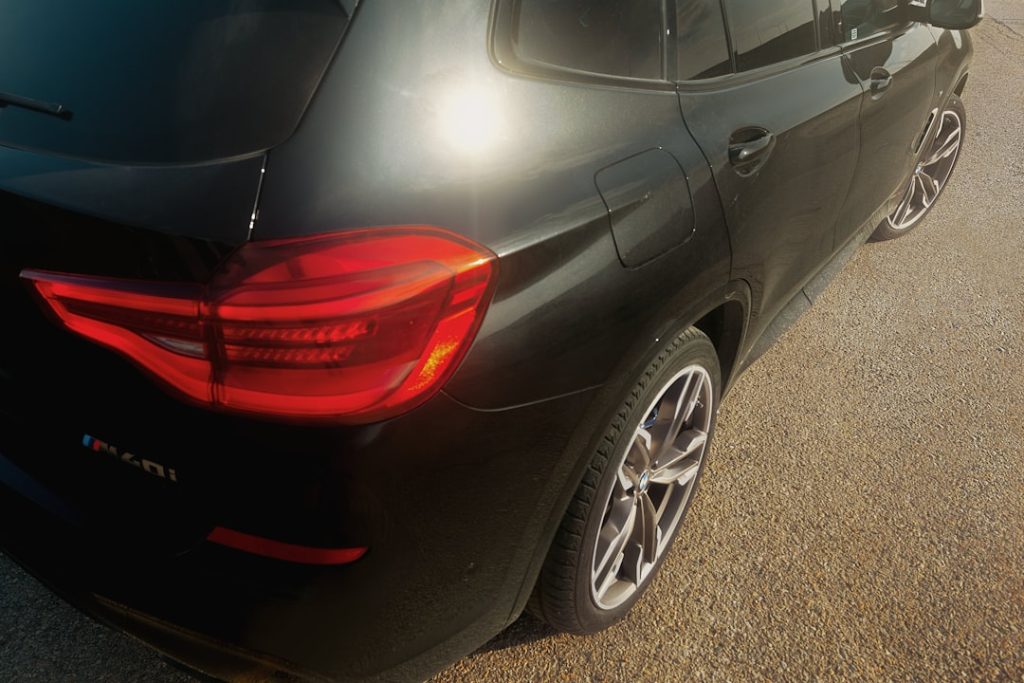The European automotive industry stands as one of the most significant sectors within the continent’s economy, contributing substantially to employment, innovation, and technological advancement. With a rich history dating back to the late 19th century, Europe has been home to some of the world’s most renowned automotive manufacturers, including Volkswagen, BMW, Mercedes-Benz, and Renault. This industry not only encompasses vehicle production but also involves a vast network of suppliers, service providers, and research institutions that collectively drive the sector forward.
The European automotive landscape is characterized by a diverse range of vehicles, from luxury cars to mass-market models, catering to a wide array of consumer preferences and needs. In recent years, the European automotive industry has faced a myriad of transformations driven by changing consumer behaviors, technological advancements, and regulatory pressures. The region is known for its commitment to quality and safety standards, which have set benchmarks globally.
However, as the industry evolves, it must navigate complex challenges while seizing opportunities for growth and innovation. The interplay between traditional manufacturing practices and emerging technologies is reshaping the future of mobility in Europe, making it a focal point for discussions on sustainability, economic resilience, and global competitiveness.
Key Takeaways
- The European automotive industry is undergoing significant transformation driven by innovation and market demands.
- Key challenges include adapting to stringent environmental regulations and shifting consumer preferences.
- Advances in electric and autonomous vehicle technologies are central to the industry’s future.
- Brexit has introduced complexities affecting supply chains and trade within the sector.
- To remain competitive globally, European automakers are focusing on sustainability and strategic growth initiatives.
Current Challenges and Opportunities
The European automotive sector is currently grappling with several pressing challenges that threaten its stability and growth. One of the most significant issues is the ongoing semiconductor shortage, which has disrupted production lines across the continent. This shortage has been exacerbated by the COVID-19 pandemic, which caused supply chain disruptions and increased demand for electronic devices.
As a result, many manufacturers have had to halt or slow down production, leading to delays in vehicle deliveries and financial losses. The ripple effects of this crisis are felt not only by automakers but also by suppliers and dealerships, highlighting the interconnected nature of the industry. Despite these challenges, there are numerous opportunities for growth within the European automotive landscape.
The shift towards sustainable mobility presents a unique chance for manufacturers to innovate and differentiate themselves in a competitive market. As consumers increasingly prioritize eco-friendly options, automakers can capitalize on this trend by investing in electric vehicles (EVs) and hybrid technologies. Furthermore, the European Union’s Green Deal aims to make Europe climate-neutral by 2050, creating a favorable regulatory environment for companies that prioritize sustainability.
By aligning their strategies with these environmental goals, automotive manufacturers can enhance their brand reputation while tapping into new revenue streams.
Technological Advancements and Innovation

Technological advancements are at the forefront of the evolution of the European automotive industry. The integration of digital technologies into vehicles has transformed not only how cars are designed and manufactured but also how they are used and experienced by consumers. Innovations such as advanced driver-assistance systems (ADAS), connected car technologies, and artificial intelligence (AI) are becoming increasingly prevalent.
These technologies enhance safety features, improve user experience, and enable real-time data analysis for better decision-making. Moreover, research and development (R&D) investments in areas such as autonomous driving are gaining momentum across Europe. Companies like Waymo and Tesla have set ambitious goals for self-driving technology, prompting traditional automakers to accelerate their own efforts in this domain.
Collaborations between automotive manufacturers and tech companies are becoming more common as they seek to leverage each other’s expertise. For instance, partnerships between carmakers and software developers aim to create seamless integration of infotainment systems and navigation tools that enhance the overall driving experience. This convergence of technology and automotive engineering is not only reshaping vehicle capabilities but also redefining consumer expectations.
Shift towards Electric and Autonomous Vehicles
| Metric | Value | Unit | Year | Notes |
|---|---|---|---|---|
| Global Electric Vehicle (EV) Sales | 10.5 | Million units | 2023 | Record high EV sales worldwide |
| Percentage of New Vehicle Sales that are Electric | 14 | Percent | 2023 | Global average |
| Projected EV Market Share by 2030 | 60 | Percent | 2030 | Industry forecast |
| Number of Autonomous Vehicle (AV) Pilot Programs | 120 | Programs | 2023 | Worldwide |
| Average Range of Electric Vehicles | 350 | Miles | 2023 | Typical range for mid-range EVs |
| Reduction in CO2 Emissions from EVs vs. ICE Vehicles | 50-70 | Percent | 2023 | Lifecycle emissions reduction |
| Investment in EV and AV Technologies | 120 | Billion | 2023 | Global R&D and infrastructure |
| Number of Countries with EV Incentives | 40 | Countries | 2023 | Includes tax credits and subsidies |
The transition towards electric vehicles (EVs) is one of the most significant trends shaping the future of the European automotive industry. With growing concerns over climate change and air quality, governments across Europe are implementing stringent regulations aimed at reducing carbon emissions from vehicles. The European Commission has set ambitious targets for reducing greenhouse gas emissions from transport, which has prompted automakers to pivot towards electrification.
Major manufacturers are investing heavily in EV technology, with plans to expand their electric offerings significantly over the next decade. In addition to electrification, the development of autonomous vehicles is gaining traction in Europe. The potential benefits of self-driving technology include reduced traffic congestion, improved road safety, and enhanced mobility for individuals unable to drive.
Several European cities are already testing autonomous shuttles and delivery vehicles as part of pilot programs aimed at assessing their feasibility in urban environments. However, challenges remain in terms of regulatory frameworks, public acceptance, and technological reliability. As automakers navigate these hurdles, they must also consider ethical implications related to autonomous driving decisions.
Environmental Regulations and Sustainability
Environmental regulations play a crucial role in shaping the strategies of automotive manufacturers in Europe. The EU’s commitment to achieving carbon neutrality by 2050 has led to a series of stringent regulations aimed at reducing emissions from vehicles. The introduction of the Euro 7 standards is expected to further tighten emissions limits for new cars and vans, compelling manufacturers to invest in cleaner technologies.
Compliance with these regulations not only requires significant financial investment but also necessitates a cultural shift within organizations towards sustainability. Sustainability is becoming a core value for many automotive companies as they recognize the importance of corporate social responsibility (CSR) in today’s market. Consumers are increasingly favoring brands that demonstrate a commitment to environmental stewardship.
As a result, automakers are adopting circular economy principles by focusing on recycling materials, reducing waste during production processes, and developing sustainable supply chains. For instance, companies like BMW have implemented initiatives to use recycled materials in their vehicle production while also exploring renewable energy sources for manufacturing facilities.
Impact of Brexit on the Automotive Industry

Brexit has introduced a new layer of complexity for the European automotive industry, particularly for manufacturers operating in both the UK and EU markets. The departure of the UK from the EU has resulted in changes to trade agreements, tariffs, and regulatory standards that impact cross-border operations. Many automotive companies have expressed concerns about potential disruptions to supply chains and increased costs associated with tariffs on imported components.
In response to these challenges, some manufacturers have begun reevaluating their production strategies. For example, companies may choose to relocate certain operations or establish new facilities within EU member states to mitigate potential trade barriers. Additionally, uncertainty surrounding future regulations may prompt automakers to invest more heavily in compliance measures to ensure they meet both UK and EU standards.
As the industry adapts to this new landscape, collaboration between governments and businesses will be essential in fostering a stable environment for growth.
Global Competition and Market Trends
The European automotive industry faces intense competition not only from established players within the region but also from emerging markets around the globe. Countries such as China have rapidly developed their automotive sectors, producing electric vehicles at scale while offering competitive pricing. This shift has prompted European manufacturers to rethink their strategies in order to maintain market share both domestically and internationally.
Market trends indicate a growing preference for mobility solutions that prioritize convenience and sustainability over traditional vehicle ownership models. Car-sharing services and ride-hailing platforms are gaining popularity among urban consumers who seek flexibility without the burden of ownership costs. In response to these trends, many automakers are exploring partnerships with mobility service providers or developing their own platforms to cater to changing consumer preferences.
This evolution reflects a broader shift towards integrated mobility solutions that encompass various modes of transportation.
Strategies for Future Growth and Adaptation
To thrive in an increasingly complex landscape, automotive manufacturers must adopt proactive strategies that emphasize innovation, collaboration, and adaptability. Investing in research and development will be crucial for staying ahead of technological advancements while ensuring compliance with evolving regulations. Companies should prioritize building agile supply chains capable of responding swiftly to disruptions while maintaining cost efficiency.
Collaboration with tech firms can also enhance innovation capabilities by leveraging expertise in software development and data analytics. By fostering partnerships across industries, automakers can create synergies that drive advancements in areas such as connected vehicles and autonomous driving technologies. Furthermore, engaging with consumers through transparent communication about sustainability efforts can strengthen brand loyalty while attracting environmentally conscious buyers.
As the European automotive industry navigates these multifaceted challenges and opportunities, its ability to adapt will determine its future trajectory in an ever-evolving global market landscape.




